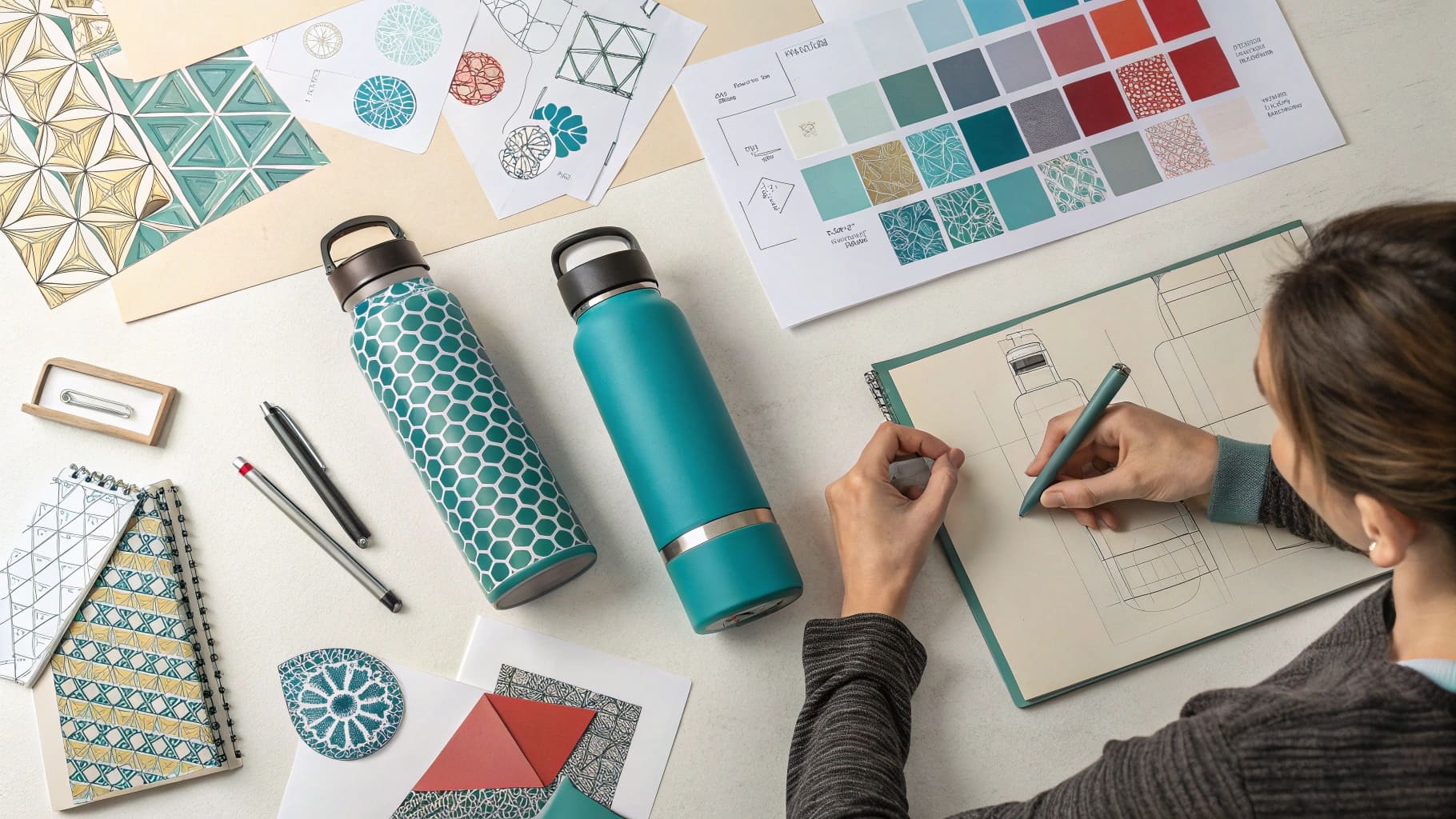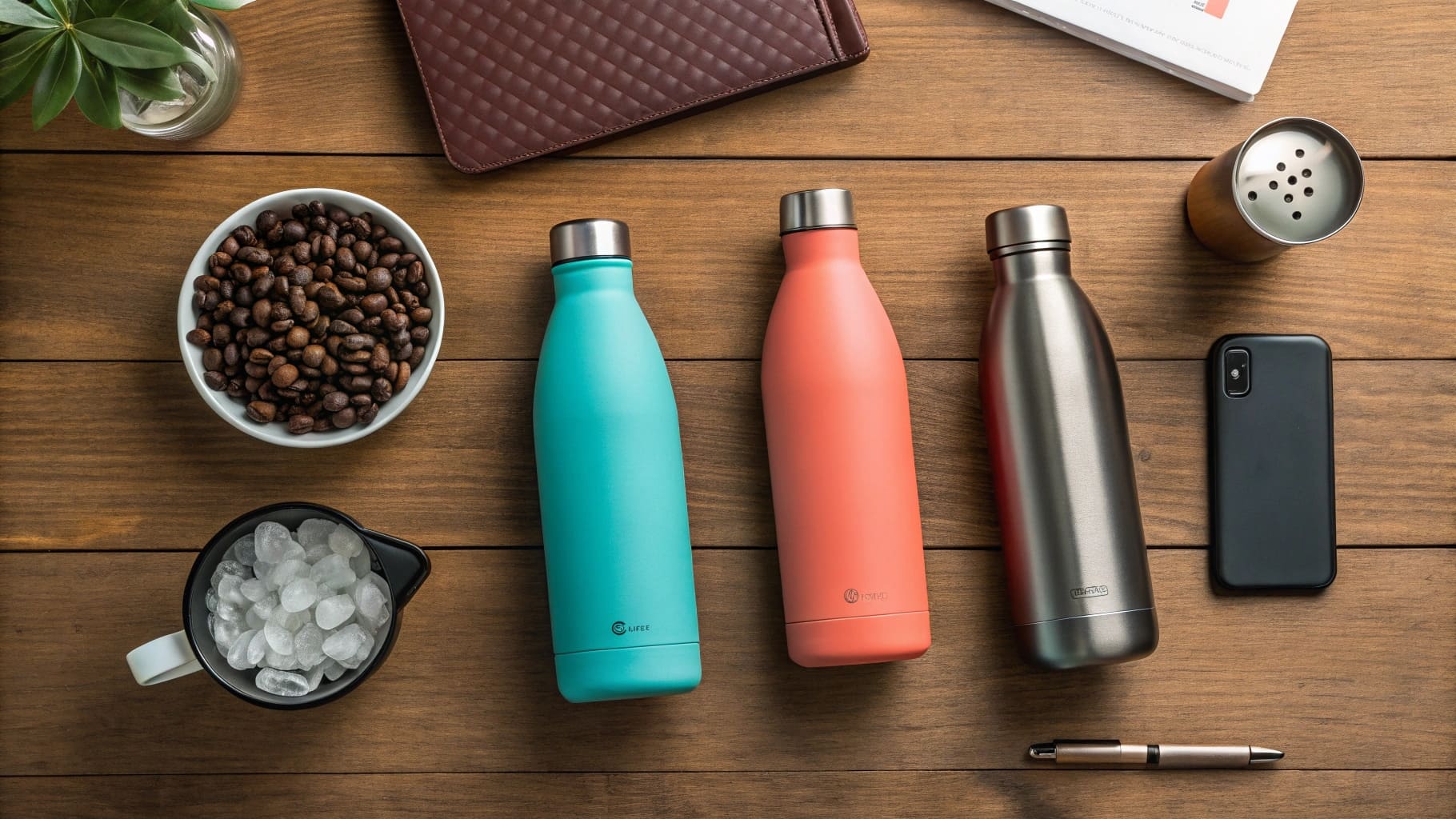Drinks getting cold too fast? Old flasks not cutting it? Discover designs that keep heat locked in longer.
Advanced vacuum flask design uses superior materials, precise vacuum creation, and smart lid engineering. This means your drinks stay hot or cold for many more hours, reliably.

I've learned a lot about what makes a truly great vacuum flask. It's not just about having two walls. There's real science and clever engineering involved. As a B2B supplier with Icobottle, I've seen firsthand how these details impact performance and customer satisfaction. If you want to understand the specifics that set exceptional flasks apart, then keep reading. I think you'll find the details quite interesting, especially if you're looking for top-quality products for your business, much like my client Mark from Canada.
What is the difference between vacuum flask and insulated flask?
Confused by "vacuum" versus "insulated" flasks? Are they the same? Understanding this difference helps you choose the best product for your needs.
An insulated flask1 simply aims to reduce heat transfer. A vacuum flask is a type of insulated flask. It uses a vacuum between its double walls for superior insulation.

Many people in the stainless steel water bottle market use "insulated flask" and "vacuum flask" like they mean the same thing. I used to get them mixed up too in my early days in this business. But there's a key difference that impacts performance significantly. Think of "insulated flask" as a general term. It means any container designed to slow down temperature change. This could be a simple foam cooler or a double-walled cup with just air in between.
Now, a "vacuum flask" is a specific, very effective kind of insulated flask. Its secret is the vacuum insulation.
The Power of Vacuum
The "vacuum" part is what makes it so good. It uses a double-wall construction2. The space between these two walls has almost all the air removed. This vacuum is amazing at stopping heat from moving. So, while all vacuum flasks are insulated, not all insulated flasks use a vacuum. Some might just use foam or other materials, which offer some insulation but are far less effective. But for keeping drinks hot for hours, like up to 12 hours, or cold for even longer, the vacuum design is king. That's why, as a B2B supplier, I focus on true vacuum technology for my Icobottle products. It delivers the performance my clients, including discerning procurement officers like Mark Shenng from Canada, expect for their premium rebranded products.
How the design of a vacuum flask keeps the liquid inside hot?
Ever wonder how your flask keeps coffee steaming for hours? Is it magic? It's actually clever science and design working together perfectly.
A vacuum flask keeps liquids hot mainly by using two walls of stainless steel. A vacuum is created between these walls. This vacuum greatly stops heat loss.

The magic of a vacuum flask keeping your drink hot for so long comes down to its core design. It's all about fighting heat transfer3. Heat usually moves in three ways. A well-designed vacuum flask tackles all of them effectively.
The Double Wall and Vacuum
The main feature is the two layers of stainless steel. For my Icobottle brand, we always recommend high-quality 18/8 food-grade stainless steel (SUS304) for the inner wall. This is the part that touches your drink, ensuring it's safe and taste-free. Then, there's an outer wall. The really important part is the space between these two walls. We use specialized equipment to suck almost all the air out of this space to create a vacuum.
This vacuum is super effective. Here's how it stops different types of heat loss:
| Heat Transfer Type | How Vacuum Flask Reduces It |
|---|---|
| Conduction | Very few air molecules to pass heat through. |
| Convection | No air means no air currents to carry heat away. |
| Radiation | Reflective inner coating (e.g., copper) bounces heat back. |
Some advanced designs, like the ones we develop for discerning clients who prioritize maximum thermal performance, will include that reflective layer, often a thin coating of copper on the outside of the inner wall (within the vacuum space). This helps to minimize heat loss through radiation, which is heat traveling as electromagnetic waves. It's a bit like how a mirror reflects light. This combination of a deep vacuum and a reflective layer is key to extended heat retention. I remember working on a custom order for Mark once; he was particularly interested in flasks that could maintain temperature for an exceptionally long period. Ensuring this reflective layer was perfectly applied was crucial for meeting his high-quality standards. He understands that these seemingly small details significantly impact the end-user experience.
What type of designs are used to create thermos structures?
What makes a thermos, a thermos? Are all designs the same? The basic structure is key, but details make a big difference in performance.
Thermos structures almost always use a double-wall design4. A vacuum is made between these walls. The lid design is also very important for good insulation.

When we talk about the "thermos structure," we're really talking about that core design that makes these flasks so good at keeping temperatures stable. It’s a universal principle across quality brands. The foundation of this structure is always the double-wall construction, designed to house the critical vacuum layer.
Key Structural Elements
The design involves several important parts working together. I often walk clients like Mark through these components, especially since he values quality inspection and understanding the product build. This transparency helps build trust and manage expectations effectively.
| Component | Material/Feature | Importance |
|---|---|---|
| Inner Wall | SUS304 (18/8) food-grade stainless steel | Safety, taste neutrality, corrosion resistance, durability. |
| Outer Wall | Stainless steel (e.g., SUS304 or sometimes SUS201 for cost-effectiveness) | Durability, structural integrity, aesthetic finish. |
| Insulation | Vacuum between walls (plus optional copper plating) | Core of thermal retention; minimizes conduction & convection, and radiation. |
| Lid | Insulated, secure seal (e.g., food-grade silicone gasket, BPA-free plastic) | Prevents heat escape/entry, leak-proof, maintains hygiene. |
The inner wall is absolutely vital. It must be made from certified food-grade stainless steel to ensure the drink is safe and doesn't pick up any unwanted metallic taste or odor. The outer wall gives strength and provides the surface for customization, like logos and colors. The vacuum layer5, as discussed, is the heart of the insulation.
And the lid – this is a surprisingly critical part that is sometimes overlooked. Heat can easily escape through the opening if the lid isn't designed well. Good thermos structures have insulated caps, often with multiple layers or air pockets, and always feature secure, leak-proof seals. These seals not only prevent messy spills but also stop hot air from escaping and cold air from getting in. I've seen flasks with excellent vacuum insulation perform poorly overall because the lid design was an afterthought. For my Icobottle products, we ensure all these elements are top-quality and work in harmony. This comprehensive approach is what procurement officers like Mark appreciate, especially when they've faced frustrating issues like inefficient communication or delayed shipments from other suppliers in the past. They seek reliability in every component and every step of the process.
Conclusion
Advanced vacuum flasks use specific designs. Double walls, a true vacuum, and well-engineered lids are crucial to keep drinks hot or cold. Understanding this helps you choose superior quality products.
-
This resource will clarify the differences between insulated and vacuum flasks, helping you choose the right product for your needs. ↩
-
Learn about double-wall construction to understand how it enhances insulation and performance in flasks, ensuring your drinks stay at the right temperature. ↩
-
Learn about heat transfer types to appreciate how vacuum flasks effectively minimize heat loss. ↩
-
Understanding the double-wall design is crucial for grasping how thermos structures maintain temperature effectively. ↩
-
Exploring the vacuum layer's role will reveal why it's essential for thermal retention in thermos flasks. ↩

